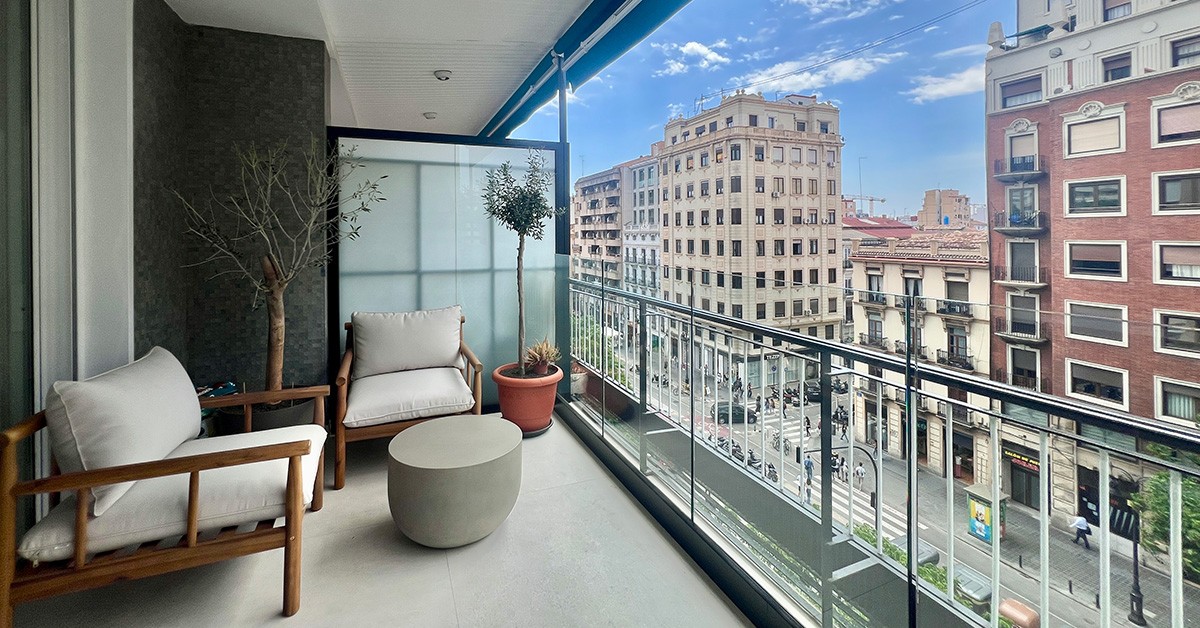
The share of household income needed to rent a property in Spain stands at 36% of the average family’s total net income, while for buying it is significantly lower at 25%, excluding the savings required to secure financing, according to a study by idealista based on data from Q3 2025.
The limited supply and consequent rise in prices explain why the effort required to buy or rent remains so high, exceeding expert recommendations in the case of renting.
Province capitals where renting is most difficult
There are 10 province capitals where the effort required to rent a two-bedroom flat exceeds the 30% recommended by experts. Palma now requires the highest percentage of household income (46%), followed by Barcelona (45%), Málaga (41%), Valencia (40%), Alicante (39%), Madrid (39%), as well as Las Palmas de Gran Canaria (34%), Santa Cruz de Tenerife (33%), San Sebastian and Bilbao (31% in both cases).
In the city of Segovia, the effort required is 30%, while lower rates are found in Seville (29%), Vitoria (28%), Ceuta (27%), Salamanca, Girona, Granada, Santander and Guadalajara (all with a rate of 26%). Conversely, the lowest effort required is in Ciudad Real (18%), Jaén (19%), Teruel (19%), Lleida (19%), Melilla, Cáceres and Palencia (with 20% in all three cases).
The province of Málaga requires the greatest financial effort to rent a home to locals, reaching 52% of family income. It is followed by the Balearic Islands (50%), Barcelona (44%), Valencia (39%), Santa Cruz de Tenerife (39%), Alicante (38%), Madrid (37%), Las Palmas (37%) and Gipuzkoa (34%). Lleida (19%) requires the least financial effort, followed by Lugo, Palencia, Teruel, Jaén and Soria (all with a 20% financial effort rate).
Rent requires more effort than paying a mortgage
In most cases, the effort required to buy is less than to rent, except in San Sebastián, and A Coruña and Cádiz, where it is the same. Furthermore, five province capitals have affordability ratios exceeding the 30% recommended by experts: Palma (45%), Málaga (38%), San Sebastián (38%), Madrid (33%) and Barcelona (31%).
Below are Alicante (28%), Valencia (27%), Cádiz (25%), Santa Cruz de Tenerife (25%), A Coruña (24%), Granada (24%), and Bilbao, Pamplona and Pontevedra (23% in all three cases). The lowest effort rates are found in Jaén and Lleida (11% in both cities), Teruel (12%), and Palencia, Huesca and Melilla (13% in all three cities).
Among the provinces, the Balearic Islands (47%) and Málaga (45%) require the greatest effort. They are followed by Santa Cruz de Tenerife (35%), Alicante (30%), Madrid (26%) and Las Palmas (25%). In Barcelona province, the rate is 19%. Ciudad Real has a rate of 9%, followed by Jaén (10%), León, Teruel, Lleida and Cuenca (11% in all four cases).
Methodology
The affordability ratio measures the burden of housing on a household's purchasing power. Specifically, in the case of renting, idealista/data measures the affordability ratio as the annual percentage of average net household income allocated to renting a typical two-bedroom flat. Rental values are sourced directly from idealista, which provides prices for each city. Net household income data, on the other hand, comes from the Spanish Institute of Statistics (INE).
Similarly, in the case of sales, the debt-to-income ratio is calculated as the annual share of net household income allocated to paying a "typical" mortgage, meaning one with average characteristics in terms of duration and interest rate. Interest rates have been updated, taking into account data published by the European Central Bank (ECB).

